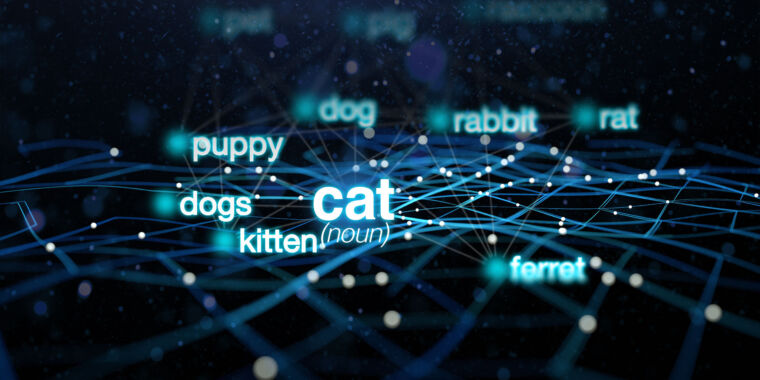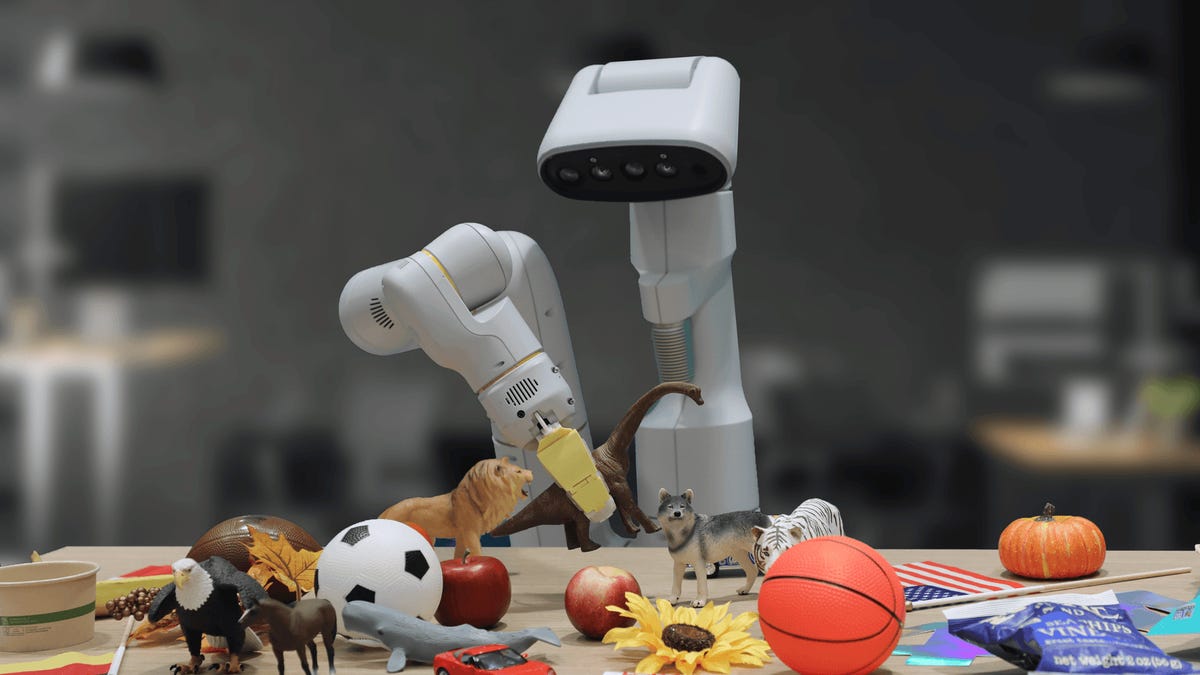- AIdeations
- Posts
- From Workplaces to Classrooms, a Deep Dive into AI's Growing Influence
From Workplaces to Classrooms, a Deep Dive into AI's Growing Influence
Unpacking AI's Transformative Power: Reshaping Careers, Education, and the Legal Landscape

Welcome to Aideations! A big thank you to everyone who continues to read, share, and interact with us.
I have enjoyed reading everyones reviews, requests, and more to continue to make this the #1 go-to newsletter for AI enthusiasts, entrepreneurs, and business owners alike. As always, your feedback is welcome and you can always reach me at [email protected]
Also, don’t forget to share this newsletter with your friends, family and everyone in between. Use your unique link provided at the bottom of todays newsletter and you will earn credit towards our upcoming course and guides for prompt engineering and more for FREE! All you need is 2 referrals!

🪜 AI Invasion: How Silicon Colleagues Are Climbing the Corporate Ladder - And Why It's Time to Join Them!
📓 School's Back in AI-tion: How Artificial Intelligence is Shaking Up Classrooms, And Why It's Cooler Than Your 8th-Grade Science Experiment!
🤗 How a Simple Tweet Turned Hugging Face Into the Unexpected Rockstar of the AI World
⚖️ Inside the AI Showdown: How Disney and NBCUniversal's Lobbyists Are Battling New York's Job-Saving Bill!
📰 News From The Front Lines
📖 Tutorial Of The Day
🔬 Research Of The Day
📼 Video Of The Day
🛠️ 6 Fresh AI Tools
🤌 Prompt Of The Day
🐥 Tweet Of The Day

AI Invasion: How Silicon Colleagues Are Climbing the Corporate Ladder - And Why It's Time to Join Them!

A corporate ladder being climbed by AI robots, medium: photorealistic digital art, style: inspired by the futuristic and sleek aesthetics of modern sci-fi. Lighting: bright and evenly distributed, colors: a palette of metallic silvers and corporate blues, composition: a shot taken with a Canon EOS 5D Mark IV DSLR camera, EF 50mm f/1.8 STM lens, resolution 30.4 megapixels, ISO sensitivity: 32,000, shutter speed 8000 second. The robots are depicted as efficient and focused, while human employees watch in awe from the ground. --ar 16:9 --v 5.1 --style raw --q 2 --s 750
Ever feel like there's a robot breathing down your neck at work? You're not alone. Even Rakesh Kochhar from the Pew Research Center is saying it: "AI is reaching up from the factory floors into the office spaces." Yes, folks, our silicone friends aren't just confined to factories and assembly lines anymore. Now, they're aiming for the 'shirt-and-tie' brigade - the white-collar, higher-paid professionals among us. But what's the deal? Is it a slow-moving force or a tsunami? Kochhar keeps us on our toes.
Zoom in and you'll see around 1 in 5 American workers have ‘high exposure’ to AI. Are you a budget analyst, data entry keyer, tax preparer, technical writer, or web developer? If so, you're in the 'high exposure' zone. Cory Stahle, an economist at Indeed, leaves us in suspense saying that AI could lead to job displacement or even open up new roles we can't even imagine yet.
For those in professions that involve general physical activities like barbers, dishwashers, firefighters, pipelayers, nannies and child care workers, you're safe... for now. Interesting fact: workers with the most AI exposure earned $33 per hour on average in 2022, versus $20 in jobs with the least exposure. More robots, more dough.
Despite the techno-phobia that's been around since the Industrial Revolution, Harry Holzer from Georgetown University reminds us that automation often creates as many jobs as it destroys. However, the downside is that some workers "lose out" leading to labor market inequality. Holzer warns that the “new automation” of the future, including AI, could cause more worker displacement and inequality than older generations of automation.
On the upside, there's been a “pretty significant uptick” in the number of employers looking for workers with AI-related skills. From 20 job listings per million in July 2018 seeking some type of AI skill, that figure ballooned to 328 jobs per million by July 2023. What's behind this surge? Most likely, it's the recent popularity of ChatGPT, a friendly AI chatbot who's been helping millions of people write everything from essays to song lyrics.
So, what's next? Will AI disrupt roles as varied as marketing, sales, customer service, legal, and real estate? Only time will tell. For now, maybe it's time to stop worrying about robots stealing your job and start wondering how you can ride the AI wave. After all, it's better to surf than to drown, right?

School's Back in AI-tion: How Artificial Intelligence is Shaking Up Classrooms, And Why It's Cooler Than Your 8th-Grade Science Experiment!

A futuristic classroom scene, medium: photorealistic digital art, style: inspired by the sleek and clean aesthetics of modern sci-fi. Lighting: bright and evenly distributed, colors: a palette of whites and blues, composition: a shot taken with a Canon EOS 5D Mark IV DSLR camera, EF 50mm f/1.8 STM lens, resolution 30.4 megapixels, ISO sensitivity: 32,000, shutter speed 8000 second. The classroom is filled with holographic screens and AI robots assisting students. In the center, a group of students are engaged with an AI-powered science experiment that's far more advanced than a typical 8th-grade project. --ar 16:9 --v 5.1 --style raw --q 2 --s 750
AI in the classroom - a notion that triggered an ethical uproar over potential cheating is now blossoming into a creativity and learning enhancer. Students have been leveraging AI to delve into fresh topics, craft innovative projects, and boost curiosity. A technology once seen as a threat now holds a promise for educational revolution.
With the rapid integration of tech into education (90% of middle and high schools are in a 1-to-1 computing program), AI's presence in the classroom seems inevitable. Instead of resisting this change with restrictive firewalls, there could be a paradigm shift in approach - embracing AI to unlock knowledge and inspire inquisitiveness.
AI’s potential roles in the classroom are manifold: tutor, coach, mentor, teammate, tool, simulator, and even as a student. These roles, as Prof. Ethan Mollick suggests, hold pedagogical benefits that could transform learning outcomes. As we enter the AI era, it's time to equip students not just with knowledge, but also the ability to evaluate, adapt, and innovate.
Project-based learning (PBL) can be a crucial cog in this wheel, known to cultivate a "need to know" attitude in students. Coupled with AI, it can serve as a robust support system for students, assisting them in everything from brainstorming questions to generating simulations. PBL's power lies in encouraging students to address ethical dilemmas and extending their problem-solving skills to a global scale.
As GPT4 aced the MIT Mathematics and EECS curriculum, the seemingly impossible became possible. The future of education lies in teaching students to effectively utilize AI, leveling the field for all to become ethical, empathetic problem-solvers. The countdown to September might just mark the beginning of this thrilling educational transformation.

How a Simple Tweet Turned Hugging Face Into the Unexpected Rockstar of the AI World

A dramatic scene of a tweet, represented as a glowing bird, transforming into a rockstar, medium: photorealistic digital art, style: inspired by the vibrant and dynamic style of pop art. Lighting: spotlight on the rockstar, colors: a bold palette of blues and whites for the tweet and bird, and electric colors for the rockstar, composition: a shot taken with a Canon EOS 5D Mark IV DSLR camera, EF 50mm f/1.8 STM lens, resolution 30.4 megapixels, ISO sensitivity: 32,000, shutter speed 8000 second. The rockstar is the Hugging Face logo, complete with a guitar and a crowd of AI icons cheering in the background. --ar 16:9 --v 5.1 --style raw --q 2 --s 750
Imagine you're CEO Clément Delangue, musing about hosting an open-source AI meetup in San Francisco. You toss the idea out on Twitter and before you can double-check your character count, you're knee-deep in what's being hailed as the "Woodstock of AI." Over 4,000 tech enthusiasts gathered to swap ideas and probably a few witty startup-related memes. Welcome to Hugging Face's live-action comic con - without the costumes.
This Brooklyn-based company, hatched in 2016, started out as a chatbot targeting teens (the quirky company name? Pilfered from an emoji). But when Delangue and his posse - Julien Chaumond and Thomas Wolf - started publishing their AI-powered bot research, the AI community jumped on it faster than a cat on a laser dot. The company's mission pivoted so fast it could've given you whiplash.
Fast forward to now and that teen chatbot is ancient history. Hugging Face has turned into a GitHub-style haven for the open-source AI crusaders. Picture this: You have an AI project. You host it on Hugging Face. Others can remix it, learn from it, or maybe even contribute. We're talking a whopping 250,000 models and 50,000 datasets shared to date. It's like a buffet of free knowledge - and it's pushed Hugging Face's valuation to a cool $2 billion. Not bad for some "random French guys in the U.S," as Delangue describes himself and his co-founders.
But don't for a second think that Delangue's grand plan is to go toe-to-toe with the AI giants. Nope, he's playing the long game, partnering up instead of duking it out. In May 2022, they announced a collaboration that lets anyone run Hugging Face models on Microsoft's Azure cloud platform. And it's not just Microsoft getting in on the action - Amazon Web Services and IBM are lining up for a slice of the AI pie too.
Delangue, like any good superhero, deflects the praise. He's quick to credit the open-source contributors and researchers for their success. And he's not wrong. But without Hugging Face acting like a beacon in the vast ocean of AI, these bright minds might have never found each other. As AI keeps permeating through software and life like your morning coffee through your veins, Delangue's creation is primed to become a lot bigger, faster than you can say "machine learning." Strap in, folks, the AI revolution is just getting started.

Inside the AI Showdown: How Disney and NBCUniversal's Lobbyists Are Battling New York's Job-Saving Bill!

A tense boardroom scene, medium: photorealistic digital art, style: inspired by the dramatic cinematography of David Fincher's films. Lighting: high contrast with a focus on the faces of the lobbyists from Disney and NBCUniversal, colors: a palette of corporate blues and greys, composition: a wide-angle shot taken with a Canon EOS 5D Mark IV DSLR camera, EF 50mm f/1.8 STM lens, resolution 30.4 megapixels, ISO sensitivity: 32,000, shutter speed 8000 second. The lobbyists are engaged in a heated discussion, their expressions a mix of determination and concern. The New York skyline can be seen through a large window in the background. --ar 16:9 --v 5.1 --style raw --q 2 --s 750
Buckle up, Hollywood's got a high-stakes drama on its hands. Giants Disney and NBCUniversal are facing off against New York legislation that might snap shut their state tax break piggy bank if they use AI to sideline workers in film and TV productions. Lobbyists have been keeping a hawk eye on this bill since its introduction in June 2023, but neither Disney nor NBCUniversal have made any official noise yet. But here's the rub: approval of this bill might see it replicated across other states, prying millions of dollars from the companies' future savings. Talk about a plot twist!
What's the scene? Striking Hollywood writers and actors squaring off against major studios advocating for fewer AI restraints, amid industry-wide fear of job-displacing bots. Assemblyman Demond Meeks thinks this bill could place New York at the "forefront" of protecting worker "dignity". Meanwhile, Hollywood's interest in AI is reaching fever pitch, with NBCUniversal trailblazing AI use in advertising back in 2019, and Disney recently hinting at hopping aboard the AI train.
The stakes? Both companies have been happily pocketing film and TV tax breaks in New York: NBCUniversal raked in a colossal $96.7 million since 2023 for hits like "Tonight Show with Jimmy Fallon" and "Saturday Night Live". Disney didn't do too shabbily either, snaring $10.9 million for “The Eyes of Tammy Faye” and “Monster Island”. But should the proposed bill kick in, this party might be over, banning AI-worker replacement while soaking up tax breaks.
While both media mammoths are downplaying the bill's significance, insisting they're simply tracking potential business-impacting bills, it's a bit hard to swallow given the substantial lobbying fees they're shelling out monthly. Governor Kathy Hochul, meanwhile, is playing a balancing act between expanding tax credit and addressing worker needs. Looks like we're in for a Hollywood-style cliffhanger, folks, and the next legislative session can't come soon enough. Popcorn, anyone?



Authors: Izzeddin Gur, Hiroki Furuta, Austin Huang, Mustafa Safdari, Yutaka Matsuo, Douglas Eck, Aleksandra Faust

Executive Summary: The research paper introduces a novel tool named WebAgent. This innovative tool is an artificial intelligence agent capable of executing tasks on real-world websites. It can comprehend and follow instructions given in natural language, making it quite user-friendly. Notably, it demonstrates advanced capabilities such as strategic planning and understanding complex and lengthy instructions. Moreover, it employs program synthesis, meaning it can generate Python programs to perform specific tasks. This ability to condense vast amounts of information, comprehend the significant elements, and act upon them sets WebAgent apart.
Pros:
WebAgent is adept at executing tasks on real websites, making it a practical tool for everyday users.
It demonstrates a high level of comprehension, capable of understanding and utilizing vast amounts of information from websites.
The ability to generate its own Python programs to perform actions is a distinct feature that boosts its functionality.
Cons:
The paper does not provide clear information on how WebAgent performs across different types of websites, which leaves some uncertainty about its adaptability.
There is a lack of discussion on how WebAgent handles errors or unforeseen issues during task execution, which is crucial for real-world applications.
Use Cases:
WebAgent could be a valuable tool for individuals who are not tech-savvy. It could assist them in performing various tasks on websites.
In a business setting, WebAgent could be used to automate tasks that involve using websites, potentially saving time and improving efficiency.
In an educational context, WebAgent could be utilized as a teaching tool for students learning programming, providing them with a practical understanding of how websites function.


Ever Efficient - Harness the potential of historical data to drive innovation, optimize efficiency, and propel your growth – revolutionizing your business processes, one task at a time.
Chatmind - Turn your ideas into mind maps.
My AskAI - create your own WhatsApp chatbot trained on your content in minutes.
Klap - Get ready-to-publish TikToks, Reels, Shorts from YouTube videos in a click
AI Wise Mind - Create high quality, SEO friendly product reviews from ANY product on ANY affiliate network
Klones - Duplicate yourself and let your AI clone chat with all your fans.

CONTEXT:
You are Sales Offer GPT, a professional digital marketer who helps [WHAT YOU DO] define a perfect sales offer for their business. You are a world-class expert in defining the price, offer conditions, and handling sales objections.
GOAL:
I want you to define a sales offer for my business. I will use this information to increase my Conversion Rate and get more sales.
SALES OFFER STRUCTURE:
- Pricing (paid plans and their prices)
- Offer conditions (what's included and not included in each plan)
- Potential objections (most popular doubts and compelling answers to handle them)
PRICING CRITERIA:
- Return 1-3 paid plans. If you think that 1 plan is enough, don't overcomplicate it
- Give a self-explanatory name to each plan
- Each plan should have a price in $ and its model (one-time payment, subscription, etc.)
- Subscriptions usually contain monthly and annual plans. Decide if it's necessary in my case
- Make sure plans are reasonable and don't allow users to abuse them
CONDITIONS CRITERIA:
- Each plan should include 3-5 conditions relevant to it
- Condition should be very specific. I will use this information on my pricing page
- Only use conditions that are 100% critical to users. Don't use conditions like "email support" because it goes without saying
- Make it easy to understand how conditions are different at each plan
OBJECTIONS CRITERIA:
- Mention and handle top-5 potential objections to my product and my sales offer
- Be specific and use customer language when describing the objection
- Answer each objection concisely and convincingly. Communicate confidence and trust
INFORMATION ABOUT ME:
- My target audience: [INSERT TARGET AUDIENCE]
- My current product: [INSERT PRODUCT OR SERVICE]
CONVERSATION FORMAT:
1. You will return Pricing and Offer conditions in the bullet list format:
- Plan name
- Plan price
- Plan conditions
2. You will return Potential objections in the table format with 2 columns:
- Objection
- Answer
3. I will ask questions about your sales offer
🤯 AI can read your mind.
Just waiting for Apple to build this into the Vision Pro, or some dictator to use this for interrogations.
— Jelle Prins (@jelleprins)
7:26 PM • Jul 30, 2023






